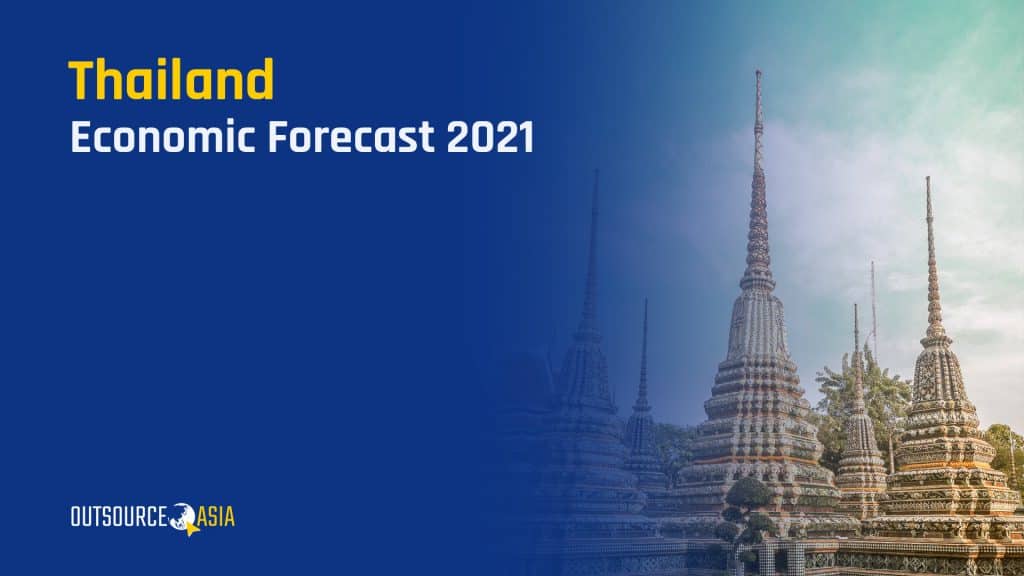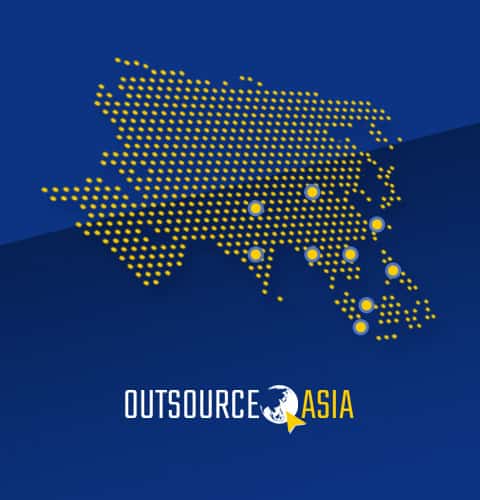
Thailand Economic Forecast 2021
The Thailand Economic Forecast 2021 summarizes key economic and social developments over the past year. It also presents findings on the evolution of policy reforms, external/global conditions, and financial-market dynamics from world-recognized financial institutions and multinational professional services authorities, assessing their implications for the country’s medium-term economic outlook.
Successive waves of COVID-19 disrupted the Thai economy in the first half of 2021, but their impact was mitigated by recovering global demand and substantial fiscal support.
- The shock of the second wave caused the economy to contract by -2.6% in the first quarter of 2021, following a 6.1% drop in GDP in 2020 – one of the steepest contractions among Association of Southeast Asian Nations (ASEAN) member states.
- A third wave of infections emerged in April 2021 has proven especially severe with strict containment measures reducing mobility and negatively affecting consumption and business sentiment.
- Exports of goods have provided substantial support to the Thai economy, driven by recovering global demand for automotive parts, electronics, machinery, and agricultural products.
Economic activity is not expected to return to its pre-pandemic levels until 2022, and the recovery is projected to be slow and uneven.
- The growth forecast for 2021 has been revised downward from 3.4% in March to 2.2%, reflecting the anticipated impact of the third wave of COVID-19 infections on private consumption, and the likelihood that international tourist arrivals will remain very low through the end of 2021.
- Private consumption is expected to see a small expansion of 2.4%, with the impact of mobility reductions, projection on vaccination progress, containment measures and income losses partially offset by social assistance measures.
- The recovery is expected to accelerate in 2022, with the annual GDP growth rate projected to rise to 5.1%.
- The government plans to vaccinate 70 percent of the population (50 million people) by the end of 2021, and any delay in the rollout schedule could adversely impact domestic mobility, consumption, and tourism.
The economic shock associated with COVID-19 has adversely affected employment, income, and poverty, but the government’s quick response has mitigated its impact.
- The official unemployment rate remained at 2.0% in the first quarter of 2021, up from 1.0% in the first quarter of 2020. More than half of all unemployed workers were formerly engaged in the services sector. By the first quarter of 2021, there were 710,000 fewer jobs than in the fourth quarter of 2020.
- Employment in agriculture declined by 10.9%, but employment in all other sectors increased by 2.5%, in line with the recovery in global demand for goods exports. The automotive and construction industries posted the highest quarterly rates of employment growth at 3.3% and 7.5%, respectively.
- World Bank simulations demonstrate that in the absence of the government’s relief measures, the headcount poverty rate would have increased from 6.2% in 2019 to 7.4% in 2020 – representing an additional 700,000 people falling below the poverty line – before declining to 7.0% in 2021.
- Poverty rates would have increased by 1.6% in rural areas and by 1.0% in urban centers, with the largest increase in northeastern Thailand, which had the country’s highest regional poverty rate in 2019.
- The government earmarked about $30 billion (1 trillion baht) in public spending for economic stimulus and support to the most vulnerable households. Around 70% of the authorized COVID-19 response spending has been allocated to support households, largely through cash transfers and subsidies, with a smaller share being directed to support the recovery of the private sector.
- Between the social assistance and social insurance schemes, over 44 million Thais have now directly benefited or compensated to some degree. Preliminary estimates suggest that more than 80% of households received social assistance during 2020.
- The total cost of transfers in 2020 was estimated at $11 billion (B386 billion baht) or about 2.3% of GDP bringing total social assistance to about 3.0% of GDP, more than tripling the 0.77% figure of 2019. The bulk of the transfers went to the informal workers and farmers who would have not been considered vulnerable prior the pandemic.
Here are five things to know about Thailand’s recent economic challenges and prospects for the recovery:
- Significant ContractionIn Economic Activity
Thailand’s GDP fell by 6.1 percent in 2020, the largest contraction since the Asian financial crisis. The tourism sector, which accounts for about a fifth of GDP and 20% of employment, has been especially affected by the cessation of tourist travel. Low-skilled workers and informal and migrant workers have been hit hard, particularly women and the youth, who have suffered disproportionately from diminished employment opportunities in contact-intensive sectors bearing a significant burden of the layoffs observed in 2020. The financial sector has thus far weathered the pandemic well, but stress has been building up in the small and medium enterprises sector.
- Bold Crisis MitigationBy The Government
Timely and stringent containment measures introduced by the authorities successfully flattened the infection curve during most of 2020. Effective containment, along with a timely and multipronged policy package – comprising fiscal stimulus amounting to about 10% of GDP; cuts in the policy rate by 75 basis points to its all-time low of 0.5%, and financial sector measures to buttress the smooth functioning of financial markets and support debtors affected by COVID 19 – helped limit the impact. The fiscal support has included health-related spending and assistance to affected households, including those outside the social security system financed by some reprioritization in the fiscal year 2020 budget and an additional borrowing of $30 billion (1 trillion baht).
- Flexible Government Policies AreA Must
Economic recovery in 2021 is expected to be sluggish, with growth projected at 2.6%. Prospects for a near-term recovery are challenged by an aggressive third wave of the pandemic. This environment calls for flexibility and careful coordination among the fiscal, monetary, and financial sector policies to adapt to fast changing circumstances. Most important to a resilient recovery at this juncture is the vaccine policy. Accelerating and ensuring adequate distribution of vaccines is critical to attain herd immunity, put an end to the pandemic, and lay the groundwork for a strong recovery.
- Mutually Reinforcing Policies for Economic Recovery
To help accelerate the recovery, a more ambitious fiscal expansion is warranted with spending focused on scaling up of public investment and protecting the vulnerable, including through better targeted social transfers. As the crisis subsides and the recovery strengthens, Thailand will need to initiate a medium-term revenue mobilization strategy to rebuild fiscal buffers and ensure fiscal sustainability. Rebuilding fiscal buffers after the pandemic will require additional effort in both revenue generation and expenditure prioritization. Targeted and more effective financial sector support to hard hit firms and households, complemented with additional monetary accommodation, would also support the recovery.
- The Need to AdaptIn A Post-Pandemic World
Thailand’s dependence on contact-intensive sectors and long-standing structural issues, such as high informality – evident before the pandemic – warrant a strong push to adapt the economy to the post-pandemic world. Further scaling up of investment, particularly for digital infrastructure, combined with improving training and education outcomes and promoting innovation will catalyze the economy’s digital transformation and mitigate the possible long‑term economic damage from the pandemic. The authorities see the crisis as an opportunity to transform the tourism sector from mass and low‑cost to high‑end and low-density tourism, while encouraging domestic tourism, to reduce the sector’s dependence on tourism‑related infrastructure and natural resources.
About Outsource Asia
Outsource Asia is committed to providing industry and technology expertise, solutions, frameworks and tools to businesses looking to explore, build, and manage outsourced teams. Its seasoned outsourcing professionals connects organizations of all sizes and types to top-notch outsourced suppliers and service providers in the Philippines and around the world.
What services do you want to outsource? Schedule for FREE CONSULTATION today.


